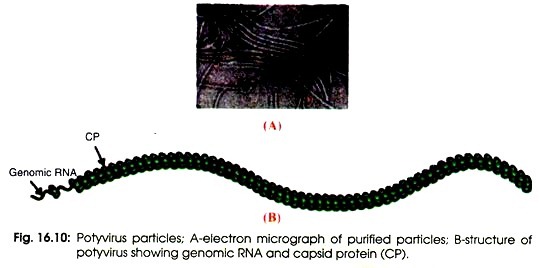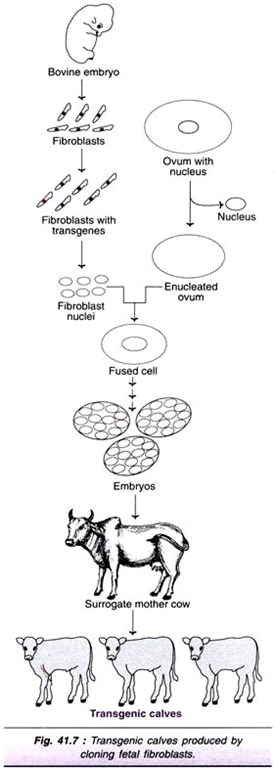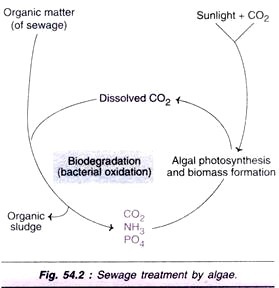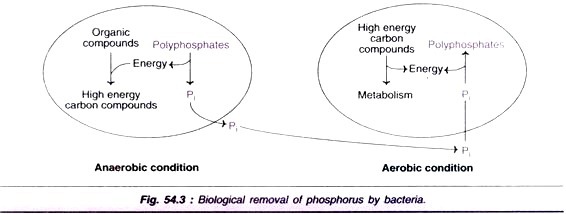ADVERTISEMENTS:
Experiment to Observe the Diversity of Plants!
Experiment:
Objective:
To study the external features of root, stem, leaf and flower of monocot and dicot plants.
Apparatus and materials required:
Glass slides, forceps, hand lens, scissors, dissecting microscope, a complete monocot plant such as onion or paddy or wheat or maize, and a complete dicot plant such as mustard or sunflower or pea.
Theory:
ADVERTISEMENTS:
The flowering plants, or angiosperms, are differentiated into root, stem, leaves and flowers. They bear seeds enclosed in a fruit. They are divided into monocotyledons and dicotyledons on the basis of the kind of seeds they bear. Monocotyledons bear seeds which have a single cotyledon. The seeds of dicotyledons have two cotyledons.
Procedure:
1. Take a monocot plant. Separate root, stem, a leaf and a flower of this plant with the help of scissors and place these parts on different slides separately with forceps.
2. Then take a dicot plant and repeat the process.
3. Now observe and compare the external features of root, stem, a leaf and a flower of the monocot and dicot plants using hand lens and subsequently by dissecting microscope.
Observation:
Root:
Identifying features of root:
ADVERTISEMENTS:
1. The part of a plant that generally develops from the radicle of embryo is called root.
2. It fixes the plant firmly into the ground and provides rigidity against wind and water.
3. It absorbs water and minerals from soil.
4. It grows towards the centre of gravity, i.e., it is positively geotropic.
5. It possesses unicellular root hairs.
6. It normally grows away from light, i.e., it is negatively phototropic.
7. It does not bear buds, leaves and flowers, and lacks nodes and internodes.
8. The root has four regions from the apex to the base:
ADVERTISEMENTS:
(i) Root cap
(ii) Region of cell division (apical meristem)
(iii) Region of elongation
(iv) Region of maturation
9. The root cap protects the growing root apex while the main growing region of the root lies just behind the root cap.
Monocot root:
1. In monocots, primary root does not persist for a longer period. It is soon replaced by a cluster of long, threadlike roots which originate from the base of the stem. These roots are called fibrous roots.
2. Roots developing from any other part of the plant than radicle are called adventitious roots.
ADVERTISEMENTS:
3. Fibrous root is a type of adventitious root.
4. Due to absence of secondary growth in thickness these roots remain slender.
Dicot root:
ADVERTISEMENTS:
1. In most of the dicots, root develops directly from the radicle.
2. It grows longer, thickens and is known as primary root.
3. It persists and becomes stronger to form tap root.
4. It generally produces lateral branches called secondary roots.
5. Branches of the secondary roots are called tertiary roots.
6. Tap root along with its branch system is called tap root system.
Stem:
Identifying features of stem:
1. The part of the plant that develops from the plumule of embryo is called stem.
ADVERTISEMENTS:
2. It forms the axis and is the ascending part of the plant.
3. It is differentiated into nodes and internodes.
4. It bears leaves and branches at the nodes. The part of stem that lies between two nodes is called internodes.
5. It is positively phototropic, i.e., grows towards light and negatively geotropic, i.e., grows away from the gravity.
6. The shoot (stem and its branches) is usually green and photos5mthetic.
ADVERTISEMENTS:
7. The apex of stem is called shoot tip. It bears apical bud which is responsible for elongation of the plant. Shoot apex lacks cap.
8. Stem bears either unicellular or multicellular hair, or trichomes.
9. The main function of the stem is to support leaves and branches and hold them in a position to receive maximum light. Thus it forms the main skeleton of the plant.
Monocot stem:
1. It is aerial, erect, herbaceous or woody, usually unbranched.
2. It is usually differentiated into solid nodes and hollow internodes. In maize, internodes are also solid.
3. In some members stem is modified into underground organs like rhizome (e.g., ginger), corm (e.g., Colocasia) or bulb (e.g., onion).
Dicot stem:
1. It is normally long, erect, herbaceous or woody, cylindrical and branched.
2. It has distinct nodes and internodes. Both the nodes and internodes are solid.
3. Sometimes it is creeping and modified into tendril.
4. It is often four-angled (quadrangular) or five-angled (pentangular).
5. In potato, the underground stem is modified into tubers.
Leaf:
Identifying features of leaf:
1. It is the lateral appendage of the stem that arises at the node.
2. It bears a bud in its axil.
3. It is attached to the stem with the help of a structure called the leaf base.
4. A stalk called petiole develops from the leaf base which bears a green flattened structure called lamina.
5. Lamina, or leaf blade, has midrib, veins, and leaf apex and leaf margin.
6. The leaves are grouped into two categories—simple and compound—on the basis of incision. Simple leaves have a single lamina. When the incision of the lamina goes down to the midrib, the leaf becomes compound having a number of leaf segments called leaflets.
7. The main functions of leaves are synthesis of food (photosynthesis), transpiration, and exchange of gases through its pores called stomata.
8. Sometimes leaves get modified for storage, defense, support, reproduction and trapping insects.
Monocot leaf:
1. Leaves are arranged isobilaterally, i.e., both surfaces are similar.
2. The venation (arrangement of veins and veins on the lamina) is parallel. In monocots veins run parallel to each other from base to the tip of the lamina. Veins connecting the adjacent longitudinal veins are inconspicuous.
3. Leaves are usually long and narrow, running parallel to the stem.
4. Leaves are mostly simple.
5. Leaf sheath (expansion of leaf base into a broad sheath) is usually present.
Dicot leaf:
1. Leaves are arranged dorsiventrally, i.e., upper and lower surfaces are distinctly different.
2. In dicot leaves, venation is reticulate, i.e., irregularly distributed to form a network.
3. In most dicots, the leaf base bears two lateral appendages called stipules.
4. Leaves are either simple or pinnately compound.
5. Leaf sheath is usually absent.
Flower:
Identifying features of flower:
1. The reproductive part of an angiosperm (higher) plant is flower, which develops from floral buds.
2. The flower is considered to be a modified shoot.
3. The stalk of the flower is called pedicel and the tip of the pedicel continues as an enlarged axis called thalamus or receptacle.
4. All the floral parts are arranged on the thalamus in a definite sequence.
5. A typical flower consists of four sets of floral parts, or whorls: calyx (sepals), corolla (petals), androecium (stamens) and gynoecium (carpels).
6. The first two whorls, i.e., calyx and corolla are not directly involved in reproduction and are called accessory whorls.
7. The inner two whorls, i.e., androecium and gynoecium are directly concerned with sexual reproduction and are called essential whorls.
8. Sepals form the outermost whorl called calyx. They are usually green and leaf like, and arise at the base of the flower.
9. Petals form the corolla. They are generally brightly coloured and sometimes fragrant to attract insects.
10. The third whorl androeciunt is the male reproductive part of the flower and consists of stamens. Each stamen consists of a slender filament and an anther at the tip.
11. Gynoecium, or pistil, is the centrally placed fourth whorl which bears the female reproductive organ called carpel. Each pistil consists of a basal swollen ovary, a narrow stalk-like style, and stigma at the tip. The ovary contains one or many ovules.
Monocot flower:
1. Calyx and corolla are not distinct in monocot flowers. Instead, perianth is present which is composed of tepals.
2. In monocots, flowers appear in clusters.
3. The flower is typically trimerous (each whorl is in multiple of three).
4. Stamens are usually versatile, i.e., filament is attached to the back of anther at a point only.
Dicot flower:
1. Dicot flowers usually have distinct floral parts, i.e., calyx, corolla, androecium and gynoecium.
2. Calyx is composed of sepals, and corolla is composed of petals.
3. Flower is mostly pentamerous (each whorl in multiple of five), sometimes tetramerous (each whorl in multiple of four).
4. In dicots, flowers usually appear separately.
5. Stamens are usually basified, i.e., filament is attached to the base of the anther.




